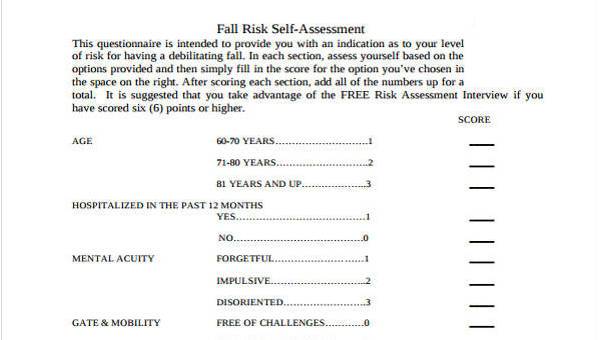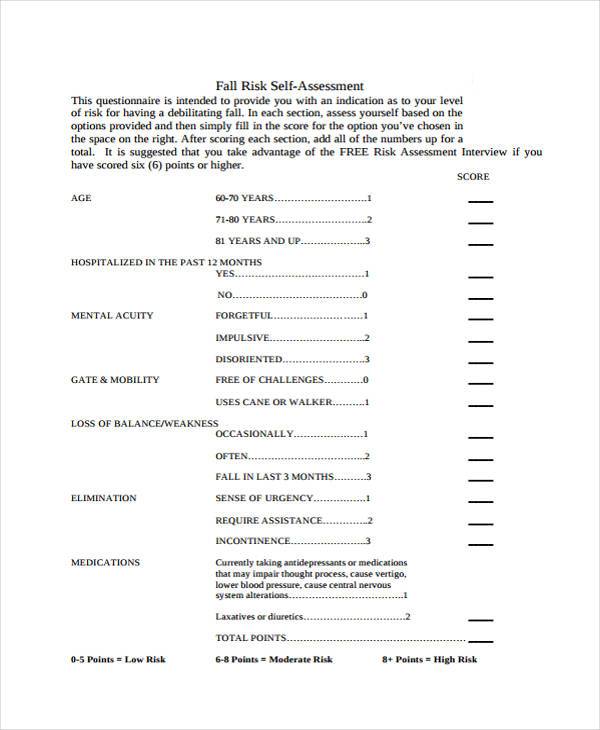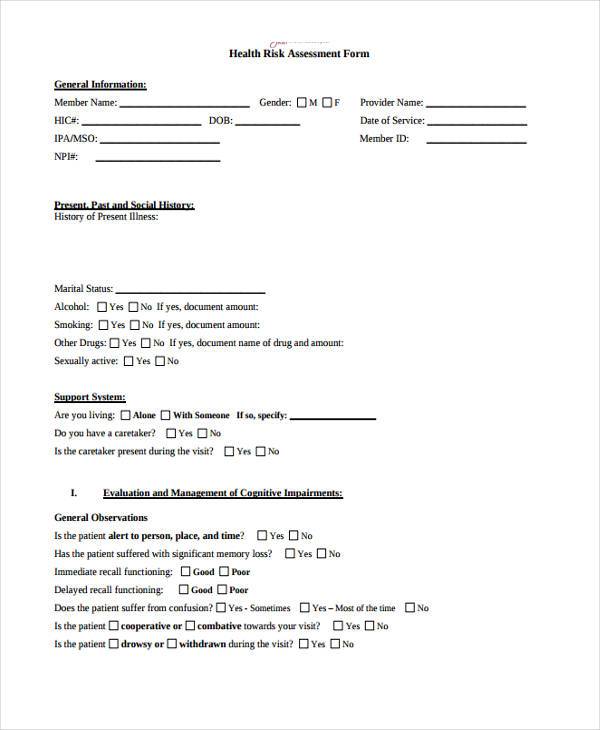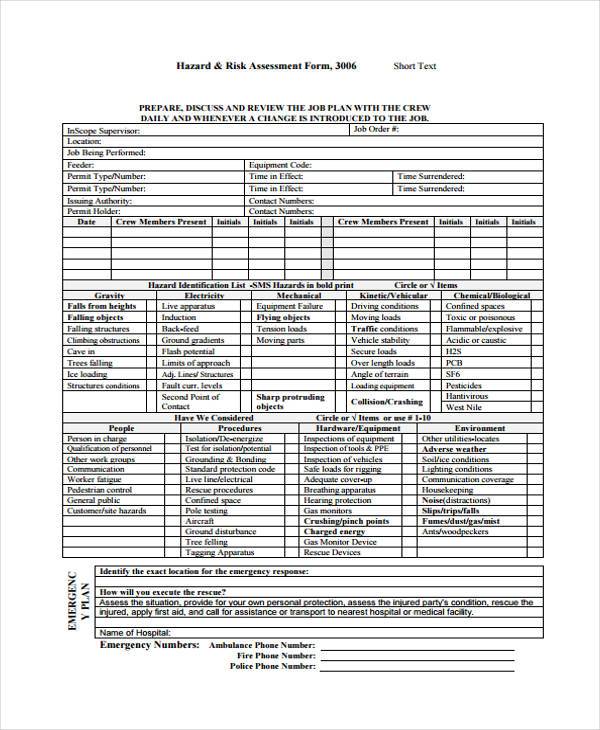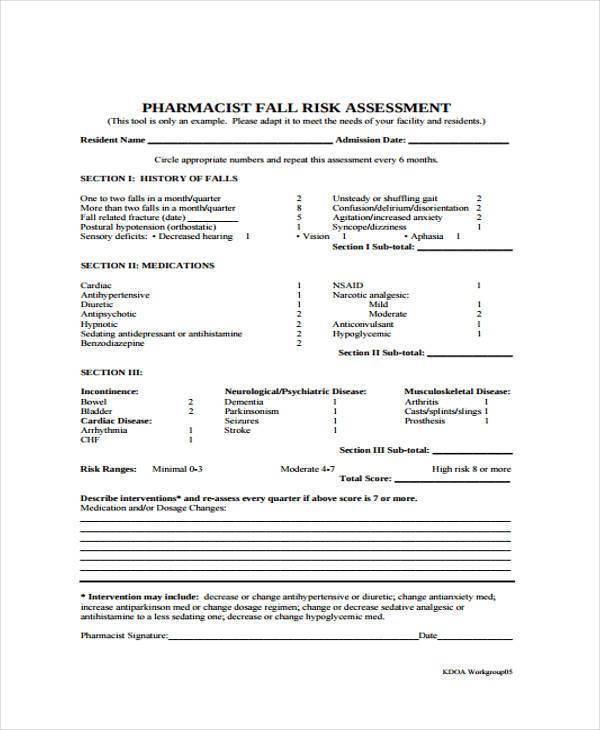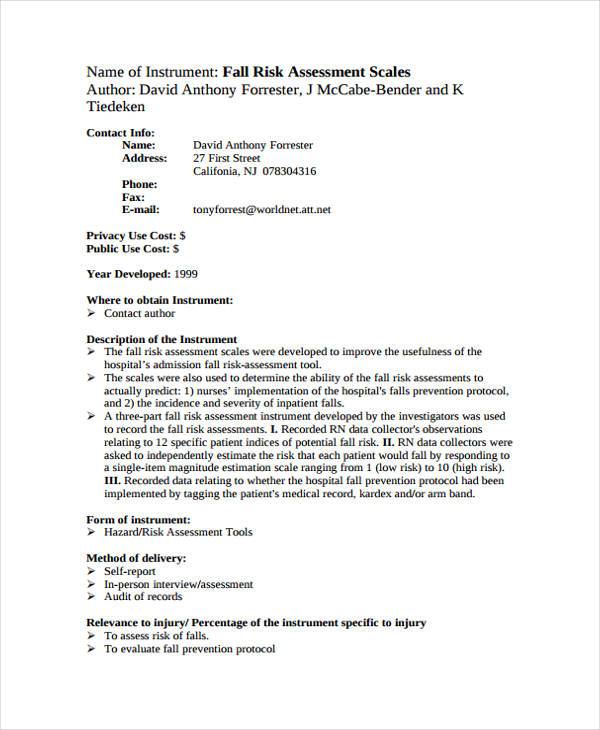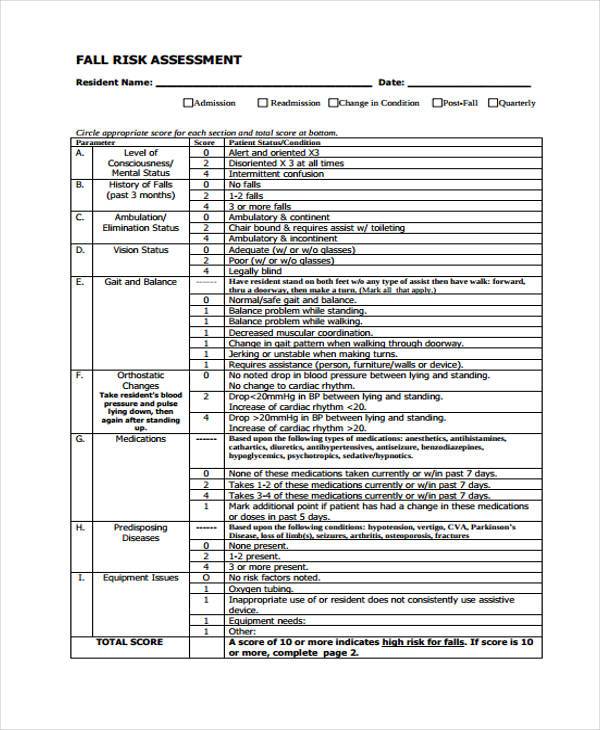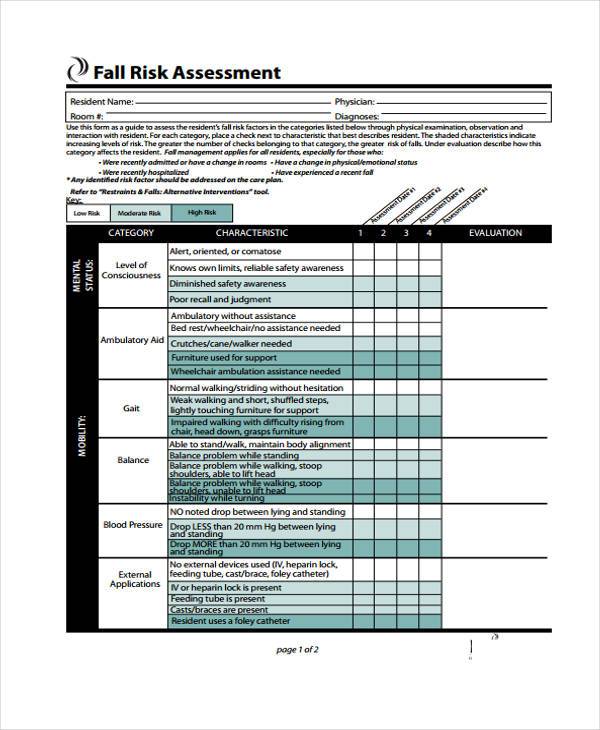Falls are not to be taken lightly. According to the World Health Organization (WHO), falls are the second leading cause of unintentional injury deaths worldwide, next to road traffic injuries. Although most falls are non-fatal, about 400,000 of them are, and 80% of these fatal incidents occur in low- or middle-income countries. About 37.3 million fall incidents require medical attention. These numbers can be a bit overwhelming. It would be helpful to assess yourself using Fall Risk Self-Assessment Forms to determine if you are at a high risk of falling.
Fall Risk Self-Assessment Form Sample
Health Risk Assessment Form
Fall Protection Risk Assessment Form
Hazard & Risk Assessment Form in PDF
Risk Factors
- Age: Older people have the highest risk of death from a fall, and this risk increases with age. This is because of the difficulty of mobility in older people and because their skeletal system aren’t as strong as that of a young adult. Children are also highly at risk due to their developing bodies and their curiosity for their surroundings.
- Gender: Although both males and females are at risk of falling, it has been found that males have the higher incident of death after a fall compared to females. This is mostly attributed to the males’ inclination toward hazardous activities and occupations, whereas females are perceived to be more concerned about safety.
Aside from this, other risk factors are alcohol and drugs, side effects of certain medications, socioeconomic factors like poverty and crowded housing, and occupational or environmental hazards. Along with these Fall Risk Assessment Forms, you may also check our Hazard Assessment Forms to identify hazards that could lead to falls and other serious physical injuries.
Aside from these forms, you can also use Health Risk Assessment Forms to check the health of a person, as this can also help identify a person’s risk of falling.
Fall Risk Assessment Form Example
Fall Risk Assessment Sample Form
Free Fall Risk Assessment Form Sample
Generic Fall Risk Assessment Form
After you have identified if you are at risk of falling, it is highly recommended that you take certain preventive measures to ensure your safety. There are a lot of medical facilities that provide assistance for people who are at a high risk of falling. You may also want to assess your home or work environment for any potential fall risks. You may use Risk Assessment Forms to identify these risks, their severity and probability, and determine which risks should be prioritized and acted on first. There are also clinical methods to help reduce fall risks, such as taking medication for any health issues that could affect your gait and balance, and vision, or taking calcium and vitamin D for older people to strengthen their bones.
As the popular saying goes, “It is better to be safe than sorry.” You can never put a price on safety and health, and that is why we do all that we can to make sure we are safe and healthy and are able to live life to the fullest.
Related Posts
-
FREE 6+ Sample Fall Risk Assessment Forms in MS Word | PDF
-
The Importance of Risk Assessment and Safety Statement [ What Is, How to Conduct ]
-
Risk Assessments And Safety Statements Guidelines [ What Is, Process ]
-
How to Fill Out a Risk Assessment Form? [ Steps, Tips, Purpose ]
-
FREE 5+ Training Risk Assessment Forms in PDF
-
FREE 4+ Control Risk Assessment Forms in PDF | MS Word
-
FREE 5+ Office Risk Assessment Forms in PDF | Ms Word
-
How to Conduct a Risk Assessment? [ With Samples ]
-
FREE 9+ Plant Risk Assessment Forms in PDF | MS Word
-
FREE 7+ Sample Health and Safety Risk Assessment Forms in PDF | MS Word
-
FREE 7+ Sample Caries Risk Assessment Forms in PDF | MS Word
-
FREE 7+ Sample Management Risk Assessment Forms in PDF | MS Word
-
Construction Risk Assessment Form
-
FREE 11+ Assessment Forms for Teachers in PDF | Ms Word | Excel
-
FREE 10+ Nutrition Assessment Forms in PDF | Ms Word
